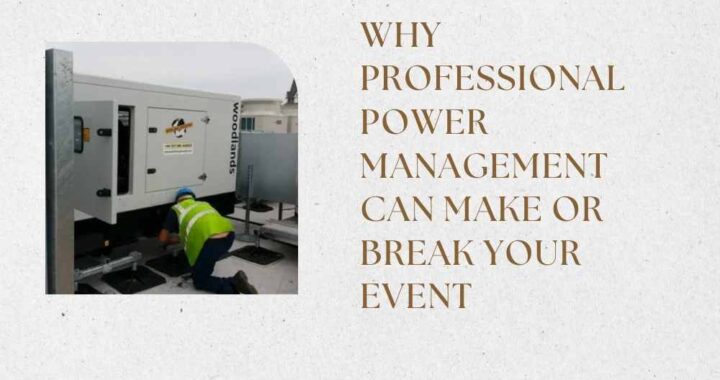Redefining European Product Standards: CE Certification Opulence

I. Introduction to CE Certification
A. What is CE Certification?
CE Certification is a mandatory conformity marking for products sold within the European Economic Area (EEA). It signifies that a product complies with EU health, safety, and environmental protection standards, allowing it free movement within the EEA market. CE stands for Conformité Européenne, meaning European Conformity.
B. Importance and benefits of CE Certification
CE Certification enhances product credibility, indicating compliance with stringent EU regulations. It facilitates market access within the EEA, fostering trade opportunities and consumer trust. Additionally, it ensures product safety and minimizes risks, benefiting both manufacturers and consumers.
C. Overview of CE marking process
The CE marking process involves identifying applicable directives and standards, assessing product conformity, conducting necessary tests and evaluations, drafting a Declaration of Conformity, affixing the CE mark, and maintaining post-market surveillance to ensure ongoing compliance. This comprehensive process ensures that products meet EU regulatory requirements and are safe for consumers.
II. Understanding CE Marking Requirements
A. Product categories requiring CE Certification
CE Certification is mandatory for a wide range of product categories, including electrical and electronic equipment, machinery, medical devices, toys, construction products, personal protective equipment, and more. Any product falling under these categories and intended for sale within the European Economic Area (EEA) must undergo the CE marking process to demonstrate compliance with applicable EU regulations.
B. Essential requirements and directives
Essential requirements outline the fundamental health, safety, and environmental protection criteria that products must meet to obtain CE Certification. These requirements are specified in various EU directives, such as the Machinery Directive, Low Voltage Directive, Medical Device Directive, and others. Compliance with these directives ensures that products are safe, reliable, and environmentally friendly.
C. Harmonized standards and conformity assessment procedures
Harmonized standards are technical specifications established by European standardization organizations that provide guidelines for ensuring product compliance with relevant EU directives. Conformity assessment procedures involve assessing whether a product meets the requirements specified in harmonized standards and EU directives. These procedures may include self-assessment by the manufacturer, involvement of a notified body, or a combination of both, depending on the product type and risk level.
III. Steps to Obtain CE Certification
Embarking on the journey of obtaining CE Certification can be both daunting and rewarding for manufacturers seeking to market their products within the European Economic Area (EEA).
A. Preparing for CE Certification
-
Identifying applicable directives and standards: Determine which EU directives and harmonized standards apply to your product to ensure compliance with relevant regulations.
-
Assessing product conformity: Conduct a thorough evaluation to ensure that your product meets the essential requirements specified in the applicable directives and standards.
-
Documentation preparation: Gather all necessary documentation, including technical files, test reports, and risk assessments, to demonstrate compliance during the CE certification process.
B. Testing and Evaluation
-
Types of tests and evaluations required: Identify the specific tests and evaluations needed to assess your product’s compliance with EU regulations, such as performance testing, safety assessments, and environmental impact assessments.
-
Choosing a notified body (if applicable): If required by the relevant directive, select a notified body accredited by the EU to perform conformity assessment procedures and issue the necessary certifications.
C. Declaration of Conformity
-
Drafting a Declaration of Conformity: Prepare a formal declaration stating that your product complies with all applicable EU directives and standards, including information on the product, manufacturer, and conformity assessment procedures.
-
Responsibilities of the manufacturer or importer: Understand and fulfill the legal obligations of the manufacturer or importer, including maintaining documentation, updating conformity assessments, and ensuring ongoing compliance.
D. Affixing the CE Mark
-
Proper placement and size of CE Mark: Affix the CE marking visibly, legibly, and indelibly on the product or its packaging, following specific guidelines regarding size, proportions, and placement.
-
Labeling requirements: Ensure that your product’s labeling includes all required information, such as the CE mark, manufacturer’s details, product identification, and relevant warnings or instructions.
E. Post-Market Surveillance and Compliance Maintenance
-
Monitoring product performance and safety: Implement procedures to monitor the performance and safety of your product once it is on the market, including collecting feedback, conducting inspections, and addressing any reported issues promptly.
-
Handling non-compliance issues: Take appropriate corrective actions if your product is found to be non-compliant with EU regulations, including product recalls, corrective measures, and updating documentation to reflect compliance changes.
IV. Common Challenges and Pitfalls
A. Misconceptions about CE Certification
One common misconception about CE Certification is that it indicates product quality, whereas it actually signifies compliance with EU safety, health, and environmental standards. Another myth is that the CE mark is voluntary; however, it is mandatory for specific product categories within the European Economic Area (EEA). Misunderstanding these aspects can lead to inadequate preparation and non-compliance, risking fines and market access restrictions.
B. Regulatory compliance issues
Regulatory compliance issues often arise from misinterpreting EU directives, incomplete documentation, or inadequate testing. Keeping up with frequent updates to standards and directives can be challenging, especially for small manufacturers. Failing to engage a notified body when required or neglecting post-market surveillance responsibilities can also lead to significant compliance problems, resulting in penalties or product recalls.
C. Dealing with non-compliance and corrective actions
When a product is found non-compliant, immediate corrective actions are essential. This includes identifying the non-conformity sources, revising the product design or manufacturing process, and updating documentation. Notifying relevant authorities and, if necessary, recalling the product from the market is crucial. Ensuring continuous compliance through regular audits and monitoring helps prevent future non-compliance issues, safeguarding both the manufacturer’s reputation and consumer safety.
V. CE Certification in Different Industries
A. CE Certification in Electronics and Electrical Equipment
CE Certification in electronics and electrical equipment ensures compliance with directives like the Low Voltage Directive and the Electromagnetic Compatibility Directive. Products must meet safety, performance, and electromagnetic interference standards. This involves rigorous testing, proper documentation, and often the involvement of a notified body. Compliance ensures these products are safe for consumers and do not interfere with other electronic devices.
B. CE Certification in Machinery and Mechanical Equipment
Machinery and mechanical equipment require CE Certification under the Machinery Directive, ensuring they meet safety and health standards. This involves risk assessments, safety testing, and compliance with harmonized standards. Manufacturers must document all processes and, if necessary, involve a notified body for conformity assessment. Proper CE marking guarantees that machinery is safe for use and minimizes risks to operators.
C. CE Certification in Medical Devices
CE Certification for medical devices is governed by the Medical Device Regulation (MDR). It ensures that devices meet stringent safety and performance standards. This process includes clinical evaluations, risk assessments, and often the involvement of a notified body. Proper documentation and continuous post-market surveillance are crucial. CE marking signifies that medical devices are safe, effective, and suitable for patient use.
D. CE Certification in Construction Products
Construction products require CE Certification under the Construction Products Regulation (CPR). It ensures that products meet performance and safety criteria relevant to building standards. This involves testing for structural integrity, fire resistance, and other essential characteristics. Manufacturers must provide a Declaration of Performance and affix the CE mark, demonstrating that their products comply with EU regulations and are safe for construction use.
E. CE Certification in Personal Protective Equipment (PPE)
CE Certification for personal protective equipment (PPE) ensures compliance with the PPE Regulation. It guarantees that products provide adequate protection against specific hazards. This involves rigorous testing, including performance and safety evaluations, and often the involvement of a notified body. Proper documentation and CE marking confirm that PPE meets essential health and safety requirements, protecting users in various environments.
VII. Conclusion
A. Recap of key points
CE Certification is crucial for products sold in the European Economic Area, ensuring compliance with EU safety, health, and environmental standards. The process involves identifying applicable directives, assessing product conformity, thorough testing, and proper documentation. Overcoming common challenges and maintaining post-market surveillance are essential for sustained compliance and market access.
B. Importance of ensuring CE Compliance
Ensuring CE compliance is vital for legal market access in the EEA, consumer safety, and product reliability. It enhances brand credibility and prevents costly penalties or recalls. Manufacturers must stay updated with regulatory changes and maintain rigorous documentation and testing practices to consistently meet CE requirements.
C. Future outlook for CE Certification
The future of CE Certification will likely involve evolving standards to keep pace with technological advancements and heightened regulatory scrutiny. Increased focus on sustainability and digital compliance processes is expected. Manufacturers must remain agile and proactive in adapting to these changes to ensure ongoing compliance and competitive market positioning.

 Virginia Business Blueprint: How to Kickstart Your Entrepreneurial Journey
Virginia Business Blueprint: How to Kickstart Your Entrepreneurial Journey  The Role of Udyam Registration in Atmanirbhar Bharat Abhiyan
The Role of Udyam Registration in Atmanirbhar Bharat Abhiyan  Mango Costs in Pakistan 2024: A Total Diagram
Mango Costs in Pakistan 2024: A Total Diagram  Why Professional Power Management Can Make or Break Your Event
Why Professional Power Management Can Make or Break Your Event  Experience The Thrill Of Zipline Dubai With Captain Dunes
Experience The Thrill Of Zipline Dubai With Captain Dunes  Exploring London’s Best Butcher Shops
Exploring London’s Best Butcher Shops  Enhance Your Shop Appeal with Sydney’s Best Carpentry Services
Enhance Your Shop Appeal with Sydney’s Best Carpentry Services  A Detailed Look at the Features of the LEGO Technic Mars Crew Exploration Rover
A Detailed Look at the Features of the LEGO Technic Mars Crew Exploration Rover